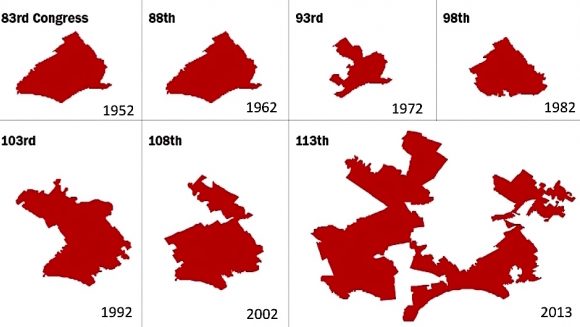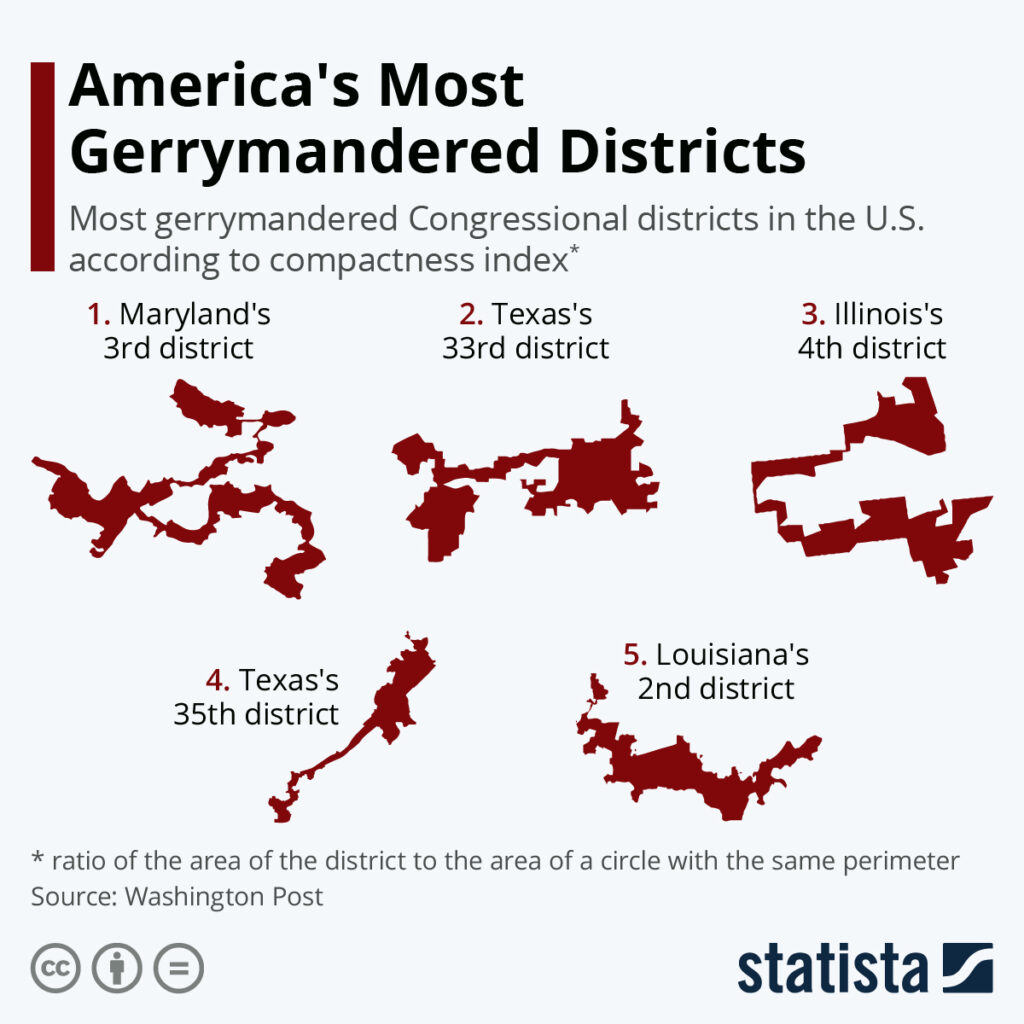In light of NM House Speaker Brian Egolf’s recent comments on Gerrymandering, NMBC wanted to go deeper and provide New Mexicans an honest look at what the term means and why it’s important for voters to understand.
Every ten years voting districts are reapportioned or “redrawn” on the map with the intent to keep them accurate and reflect the true number of voters as indicated by the most recent census count. (Another reason an accurate census is important for all Americans.) When it comes to Congressional districts, like the one referred to by Egolf, the US has 435 that need to be reevaluated every decade. This is where things get fishy. When the time for reapportionment (or redrawing of the district lines) is up, most states (including New Mexico) allow politicians to divide up the districts. Generally speaking, this means the party in charge at the time of redistricting is the one who get the final say on the reapportionment. This unfortunately allows for bias to play a part and shape districts in a way that will favor one party over another and the results are fairly predictable.
For example lets look at Pennsylvania’s 7th Congressional District, which is regularly described as one of the most gerrymandered districts in the country. We can see over time the district that once looked like a standard portion of the state has morphed to meet the needs of whomever did the reapportioning. This creates the strange boundaries seen below that are specifically designed to ensure one party has an edge over another. While it might have the correct number of voters to meet the requirements, it’s shape specifically avoids certain areas or groups of people who might sway the vote results.

The practice of gerrymandering has been a facet of both political parties since it’s inception in the early 1800’s by Elbridge Gerry of the Democratic-Republican Party, which later coalesced into the modern Democratic Party. This by no means makes it ethical or even legal. However, it is very difficult to prove that a district has been unfairly redrawn in a court of law because the Constitution provides no tools for deciding on a balanced district. The U.S. Supreme Court, in a 5-4 ruling, said that federal courts have no authority to decide whether partisan gerrymandering goes too far. Chief Justice John Roberts wrote: “The Constitution supplies no objective measure for assessing whether a districting map treats a political party fairly.”
So here we are. After the results of the 2020 general election, the Democratic party of New Mexico holds a commanding share of the state government and is also in a position to control how the new district lines will be drawn. This is why House Speaker Egolf’s statements are so troubling, not only to voters who could have their votes sidelined in a district that gives the opposing party the edge, but also to members of both parties who want to see fair elections and balanced districts.
The easiest way to solve this issue, of course, would be to take the redistricting process out of partisan, or even human hands entirely. There is already software capable of doing just that but there is little interest from politicians to agree to it, though. For more information and a great brief on the issue watch the video below.


